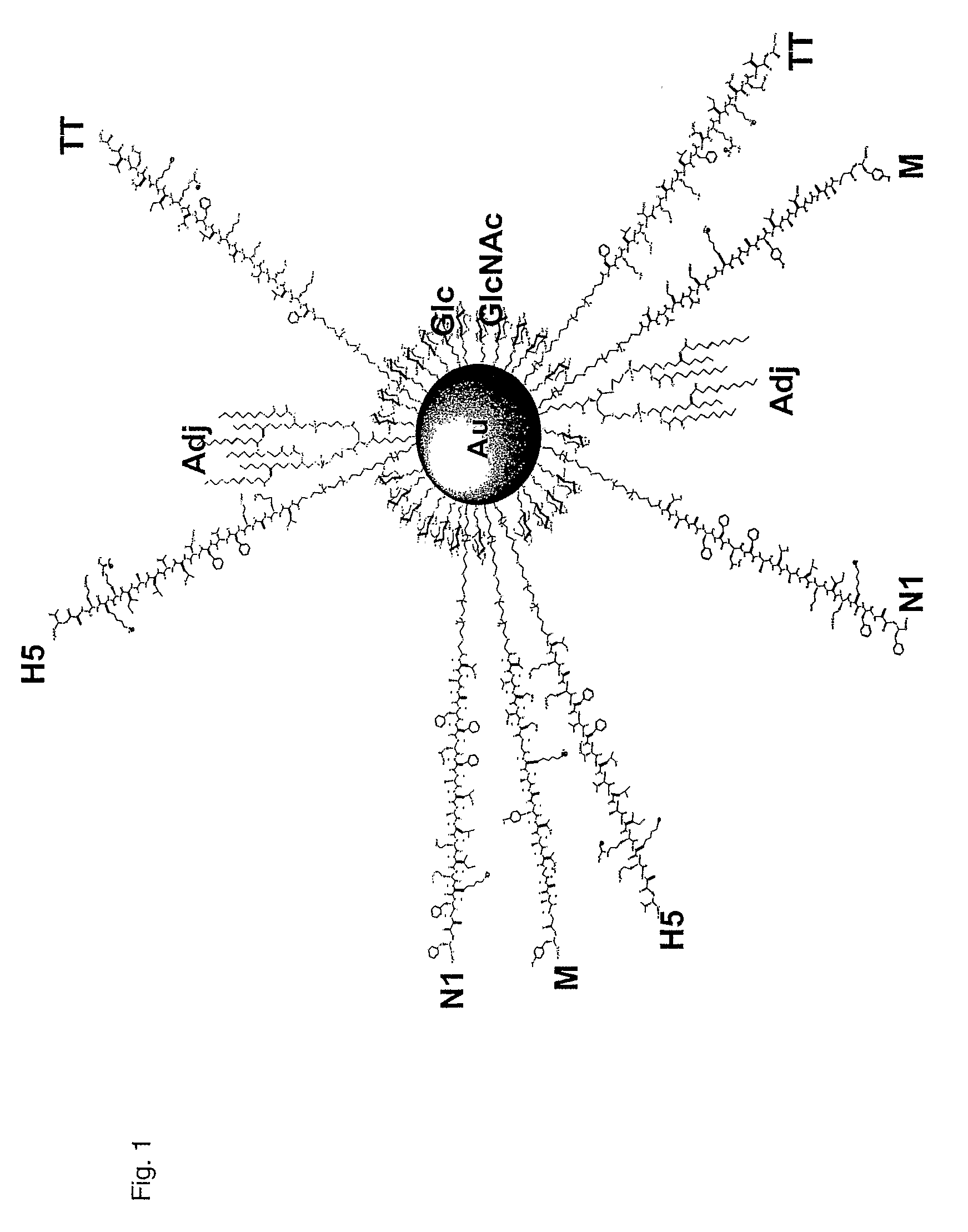Nanoparticles for providing immune responses against infectious agents
a technology of nanoparticles and infectious agents, applied in the field of nanoparticles, can solve the problems of affecting the immune response of infectious agents, affecting the use of carbohydrate and peptide antigens in vaccines, and being too toxic or too experimental to be used in humans, so as to improve stability, strong immune response, and ameliorate the need for multiple vaccinations
- Summary
- Abstract
- Description
- Claims
- Application Information
AI Technical Summary
Benefits of technology
Problems solved by technology
Method used
Image
Examples
Embodiment Construction
Nanoparticles
[0049]Nanoparticles are small particles, e.g. clusters of metal or semiconductor atoms, that can be used as a substrate for immobilising ligands. They can be prepared using the methodology reported in WO 02 / 32404 and WO 2004 / 108165.
[0050]The nanoparticles of the invention are soluble in most organic solvents and especially water. This can be used in their purification and importantly means that they can be used in solution for presenting the ligand immobilised on the surface of the particle. The fact that the nanoparticles are soluble has the advantage of presenting the ligands in a natural conformation. For therapeutic applications, the nanoparticles are non toxic, soluble and stable under physiological conditions.
[0051]Preferably, the nanoparticles have cores having mean diameters between 0.5 and 50 nm, more preferably between 0.5 and 10 nm, more preferably between 0.5 and 5 nm, more preferably between 0.5 and 3 nm and still more preferably between 0.5 and 2.5 nm. Whe...
PUM
| Property | Measurement | Unit |
|---|---|---|
| diameter | aaaaa | aaaaa |
| diameter | aaaaa | aaaaa |
| diameter | aaaaa | aaaaa |
Abstract
Description
Claims
Application Information
 Login to View More
Login to View More - R&D
- Intellectual Property
- Life Sciences
- Materials
- Tech Scout
- Unparalleled Data Quality
- Higher Quality Content
- 60% Fewer Hallucinations
Browse by: Latest US Patents, China's latest patents, Technical Efficacy Thesaurus, Application Domain, Technology Topic, Popular Technical Reports.
© 2025 PatSnap. All rights reserved.Legal|Privacy policy|Modern Slavery Act Transparency Statement|Sitemap|About US| Contact US: help@patsnap.com



